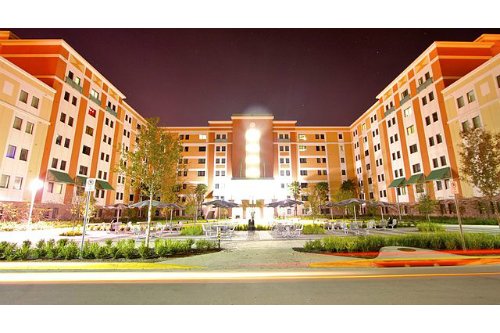

How much student housing is enough? How much is too much? These are questions that universities and city planners across the country are trying to answer to prevent the student housing bubble from bursting. According to a recent report from National Real Estate Investor, 2014 saw declining college enrollment, but more student housing developments than ever before.
Here is a glimpse at the issue, from various locations and various perspectives, around the country.
“… a bubble that’s going to burst in a very big way.”
Columbia, Missouri Planning and Zoning Commissioner Ray Puri, feels like the recent 5-3 vote to approve an 849-bed student housing complex is a failure to provide something the city needs: housing diversity. In fact, as noted in an article from the Columbia Missourian, he refers to student housing development as “a bubble that’s going to burst in a very big way.” He fears that the developments aren’t addressing the needs of all of the residents and that there are problems with crime in the city’s existing student housing developments.
However, fellow commissioner Rusty Strodtman, feels like — as the student population is a key population in the community — the commission’s job is to ensure that the needs of that population must be addressed.
Preserving neighborhoods or discriminating against housing?
The Planning and Zoning Commission in Hamden, Connecticut, isn’t ready to make a final decision on how to deal with zoning permits for student housing. Instead, according to a report from Fox CT, they’ve opted to extend their moratorium on permits for new student housing developments for another six months. The commission’s concerns, include parking and health issues as well as on-campus housing at Quinnipiac University, where empty dorm rooms are a sign of more and more students opting for off-campus housing.
Some homeowners walked out of the meeting angry, with one resident stating that the moratorium is preventing her from renting out a home that she renovated for students. The President of the Connecticut Property Owners Association called the moratorium discrimination against housing and reminded the commission that this is America. However, despite some protests, others agreed with the commission, stating that the increasing numbers of students were changing the look and feel of their neighborhoods.
Driving up the cost of attendance
The student housing issue is causing the University of Minnesota to review its 2009 policies, Minnesota Daily recently reported. According to Regent Thomas Devine, students choosing to live off campus are facing higher costs of attendance. He believes that the institution should focus on nonprofit and cooperative housing options as a viable alternative for aging dormitories.
The vice president of corporate communications and marketing at an area realty company stated though that it’s the private developers who are in touch with, and able to offer the students what they want for their housing: amenities such as gyms and study lounges which aren’t available with campus housing.
Beyond student housing
A deal is in the works in College Station, Texas, home of Texas A&M University, to offer student housing that is more than just another student housing initiative. According to a post in the Wall Street Journal, the Chicago-based Harrison Street Real Estate Capital is undertaking a $172 million project on university-owned land.
The project will provide 250 high-end rental apartments. It will also provide two hotels, with approximately 300 total rooms, as well as retail and office space. Though the firm has a long-standing reputation for providing traditional student housing options, they say students aren’t really the target for this rental space, but rather the faculty, young professionals and businesses seeking to have space near the campus.
The hope: a hub of shopping and entertainment activity for the students and the region as a whole. The reason, according to the Harrison Street CEO: “There are a lot of other ways to invest and make money in university towns.”
If you build it…
The National Real Estate Investor article notes that existing off-campus student housing properties were 95.8 percent occupied in January of this year. It’s a 1.8 percent increase over the occupancy rates in January of 2014, even with the addition of 60,000 beds in 2014. Pre-leasing rates for new off-campus student housing scheduled to open in the fall is at 44 percent — the highest rate since 1995.
Stay up to date with what is going on in the world of student housing. Check back here for more student housing business reporting.
Are you worried about potential student housing bubble problems? Let us know about them in the comment section below.






 Equal Housing Opportunity
Equal Housing Opportunity

